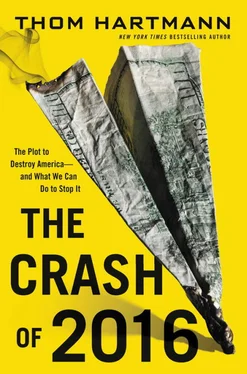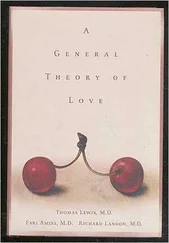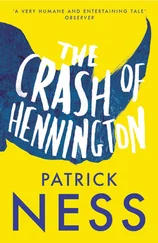And my dad’s story wasn’t unique—the era of the fifties, sixties, and seventies saw the American Dream being realized all across the nation.
My dad lived the American Dream and had a good and happy middle-class life because FDR changed the laws of American commerce. Instead of a “free market,” we had a “middle-class market,” which is actually pretty rare in human history.
In her writings, which have become foundational for libertarian theology, author Ayn Rand suggested that the only purpose of government should be to prevent oppression by force. What she neglected to consider was all the force inherent in nature.
If you are hungry, there is the “force” of biology. If you’re homeless, you confront the “force” of wind and storms, ice and snow. If you’re sick, you confront the ravages and “force” of disease.
These were the forces that provoked the first governments. The first communities, clans, and tribes. The first nation-states.
It’s easy for libertarian elitists, such as multimillionaire TV talking heads or college kids reading Atlas Shrugged , to talk about how there should be “no government beyond police, the army, and courts.” They all have enough resources that they don’t need to deal with the forces of raw nature. And that explains why billionaires would bankroll libertarian-leaning think tanks that will, when the crash comes with its full force, tell us it was “caused” by “big government.”
However, in the real world, humans must confront both nature and other humans. Which is why we create governments, and why we create economies.
But it wasn’t until 1776, when Thomas Jefferson replaced John Locke’s right to “life, liberty, and property” with “life, liberty, and the pursuit of happiness,” that the idea of a large class of working people having the ability to “pursue happiness”—the middle class—was even seriously considered as a cornerstone obligation of government.
(That was also the first time in history that the word “happiness” had ever appeared in any nation’s formative documents. As Jefferson wrote in 1817 to Dr. John Manners, “The evidence of this natural right, like that of our right to life, liberty, the use of our faculties, the pursuit of happiness is not left to the feeble and sophistical investigations of reason, but is impressed on the sense of every man.”) 50
As Jefferson realized, with no government “interference” by setting the rules of the game of business and fair taxation, there could be no broad middle class—maybe a sliver of small businesses and artisans, but the vast majority of us would be the working poor under the yolk of elites.
The Economic Royalists know this, which gets to the root of why they set out to destroy government’s involvement in the economy.
After all, in a middle-class economy, they may have to give up some of their power, and some of the higher end of their wealth may even be “redistributed”—horror of horrors—for schools, parks, libraries, and other things that support a healthy middle-class society but are not needed by the rich, who live in a parallel, but separate, world among us.
As Jefferson laid out in an 1816 letter to Samuel Kercheval, a totally “free” market, where corporations reign supreme just like the oppressive governments of old, could transform America “until the bulk of the society is reduced to be mere automatons of misery, to have no sensibilities left but for sinning and suffering. Then begins, indeed, the bellum omnium in omnia , which some philosophers observing to be so general in this world, have mistaken it for the natural, instead of the abusive state of man.” 51
Although this may come as a sudden realization to many, we’ve really known it all our lives.
In fact, in the six-thousand-year history of the “civilized” world, a middle class emerging in any nation has been such a rarity as to be historically invisible.
The United States has had two great periods of what we today call a middle class. The first was from the 1700s to the mid-1800s, and was fueled by virtually free land for settlers (stolen from the Indians) and free labor (slavery in the South and indentured immigrants in the North).
The result was (as de Tocqueville pointed out) the most well-educated, politically active, middle-class “nonaristocrats” in the world.
The second period didn’t take hold until after World War II, during my dad’s lifetime. Unlike the first, which was fueled by free land and slaves, the second had to be carefully constructed with specific (and what some might define as “socialist”) policies put in place during the New Deal, which asserted more democratic control over the economy and workplace in order to hold the Royalists in check.
Step One: Progressive Taxation
To both stimulate and balance that domestic economy, FDR reinstituted progressive taxation, which gave workers more to spend and gave the rich an incentive to pay their workers better to maintain a stable workplace (since if they took the money themselves, it would just mostly go to taxes), thus stimulating demand for more goods and services.
Progressive taxation has a long history: As Jefferson said in a 1785 letter to James Madison, “Another means of silently lessening the inequality of property is to exempt all from taxation below a certain point, and to tax the higher portions of property in geometrical progression as they rise.” 52
FDR eventually hiked the top income tax rate paid by the superrich in America to 90 percent. This had a twofold effect.
First, it held income inequality in check and ushered in an era of equal income growth among all classes. Unlike the Gilded Age, when the economy grew at a blistering pace but the gains were afforded only to the Robber Barons, the period between 1947 and 1979 saw unparalleled equitable growth.
During these thirty-plus years, the poorest fifth of Americans saw a 116 percent increase in their incomes. The middle fifth, a 111 percent increase. And the top 5 percent saw an 85 percent increase. All income classes shared in the prosperity of the times when the top marginal income tax rate was above 70 percent. 53
The second effect of a high top income tax rate is to bring stability to the economy.
Writer and political/economic commentator Larry Beinhart figured out the truth about taxes, which is that they can be very destructive if kept too low.
He looked at the history of tax cuts and the history of economic bubbles and busts and found a relationship between the two. Whenever top marginal tax rates were relatively high—above 60 percent usually—the economy was at its most stable. Economic bubbles were kept in check since the superwealthy didn’t have enormous amounts of hot money to go speculate in the market; debt and deficits were lower, giving the government enough resources to sew a strong social safety net; and working people’s wages grew steadily. As a result, the economy as a whole saw sustained growth.
But when those top marginal tax rates dropped, the opposite happened. The very wealthy had a lot of extra money with which to go play in the markets and to place enormous bets on everything from start-up tech companies, to oil and food commodities, to real estate, setting up boom-bust cycles that made some people mind-bogglingly rich during the boom, but left most Americans holding an empty bag when the bust happened.
This was the lesson we thought we learned after Treasury Secretary Andrew Mellon cut the top rate from 73 percent to 25 percent in the 1920s, setting up a frenzy of market speculation and the eventual Great Crash of 1929.
And, as studies from the Center for American Progress show, when the top marginal income tax rate is above 50 percent, economies perform better as a whole. During the past fifty years, average annual GDP growth and employment growth was the highest when the top marginal income tax rate was between 75 and 80 percent. The lowest was when the top marginal income tax rate was 35 percent. 54
Читать дальше












